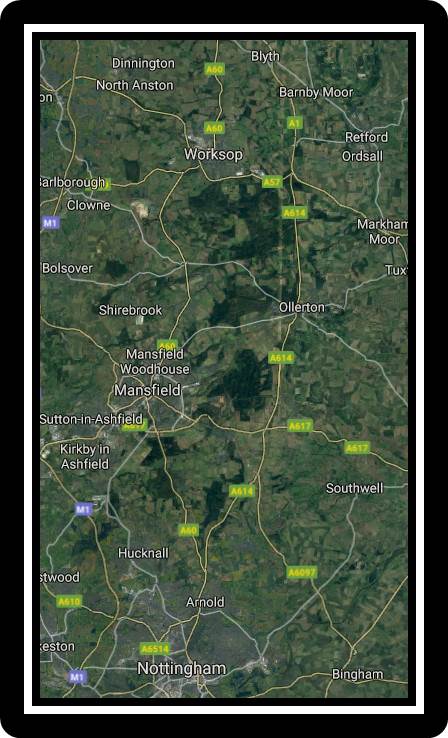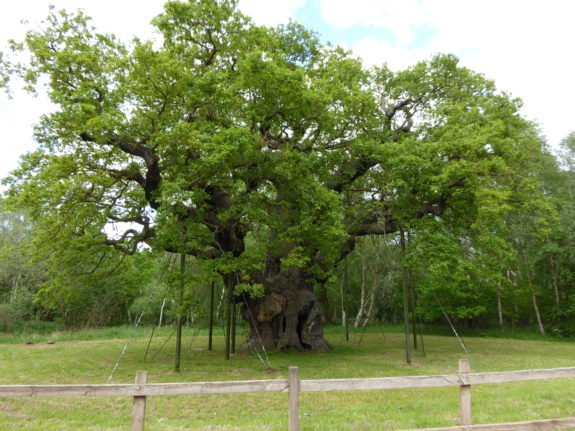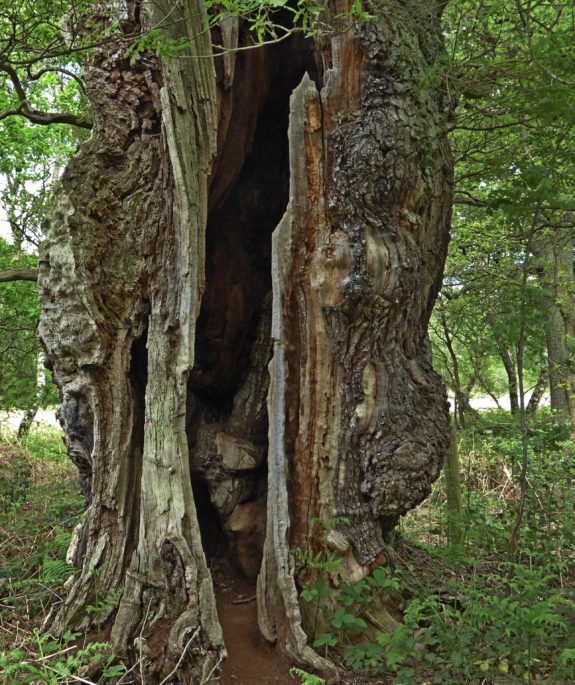I recently returned from a combination research cum vacation trip. Hmmm. . .surely we writers need a portmanteau word for that, but I’m not quite sure what it would be. Anyway, during the trip, I had a chance to visit Sherwood Forest and imagine its past. Well, you’re in that part of England and you grew up with the Robin Hood legends, so it’s what you do, right?

A look at a Google satellite view such as this screen capture above would lead us to believe there’s not much left of a once vast forest. It’s true that much of the forested lands are quite reduced in area from what they would have been long ago. (It should be noted that the town of Nottingham was once within the area designated as the forest.) And the character of the remaining woodlands has certainly changed since the time of Robin Hood. No longer the hunting preserves of the nobility, they’re now more likely to be country parks.
But this all got me to thinking about how we, as writers of historical fiction, are called upon to take in what we can actually see—in a landscape, in the streets of very old sections of a city, inside an ancient or even a ruined structure—and extrapolate backwards, if you will, to what would have been experienced by those who inhabited it long past.
The Major Oak of Sherwood Forest continues to thrive today, though admittedly it gets a little help from conservationists who’ve installed support posts to help it hold up the heaviest of its massive lower limbs. We can see from the surrounding fence that another way conservationists are helping the tree survive is by keeping human encroachment at bay.

The tree was a mere youngster of 325 or so years during the reign of Richard the Lionheart. What did it look like then? Was it part of a grove with great oak and beech trees that have since died or been harvested for timber or fuel? Along nearby paths, there are oak and beech and even the occasional grove of evergreens, some obviously quite old with gnarled or hollow trunks, some clearly new growth, some dead but their hulks still standing. But the forest here is not particularly dense, and it’s impossible to know if the grazing meadow in the middle of this section of forest has been there since ancient times—certainly it was common for such areas to be part of a legally designated “forest.” Or has the meadow emerged as a result of men taking the trees for their own use?
And so I put on my storyteller’s hat. I imagined the denser wood of the past. Narrow paths without signposts that only the locals and the animals would know. Big trees that a man could hide behind or within the canopy if he didn’t want to be seen.
Trees with hollow trunks providing the perfect hiding place for a small boy trying to elude his pursuers. The occasional wider track that was the traveler’s path through the forest, on horseback or by wagon. Woodland animals feeling safe in the shadows among the trees, but keenly alert to any sound that might signal hunters and danger. Birdsong. Simple people going about their business in the forest during the day. Ah, but when night falls—especially a night with little moon—the forest becomes a different place. Lose your way and the hulks of long-dead trees loom like ghostly apparitions to strike terror into your heart.

What one sees today is far from what one saw when the Major Oak was just a sapling—or when Henry II went hunting there—or when it was known as the Cockpen Tree because 18th-century cock fighters penned their birds inside its hollow trunk before a fight—or when a hotel was built in nearby Edwinstowe to house Victorian tourists come to see the tree. But what one can see is enough to allow our imaginations and what’s known about the history of the place to truly bring that past alive for our readers.

Pamela Taylor’s inspiration for her first book turned out to be that final straw that pushed her to leave the corporate world behind for the world of words and imagination. Now an author and an editor, she loves helping others polish their stories almost as much as she enjoys writing her own. She’s a member of the DFW Writers Workshop and the Editorial Freelancers Association and is in her third year on the judges panel for the Ink & Insights Contest. You can learn more about her at pamela-taylor.com, and about her editing services at editing4you.com.







